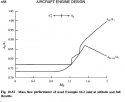Engineer
Major
From , the difference between actual and required flow is either spilled or bypass:

The same source then mentioned again that excess air needs to be bypassed:

The source does not say anything regarding using intake ramps to reduce excess air, contrary to your claim. The fact remains that the bypass system is what regulates air flow in an inlet. As for spillage, it can occur on fixed-inlet and DSI. It can also occurs with pitot intake at subsonic speed, as you can see
 .
.

The same source then mentioned again that excess air needs to be bypassed:

The source does not say anything regarding using intake ramps to reduce excess air, contrary to your claim. The fact remains that the bypass system is what regulates air flow in an inlet. As for spillage, it can occur on fixed-inlet and DSI. It can also occurs with pitot intake at subsonic speed, as you can see















